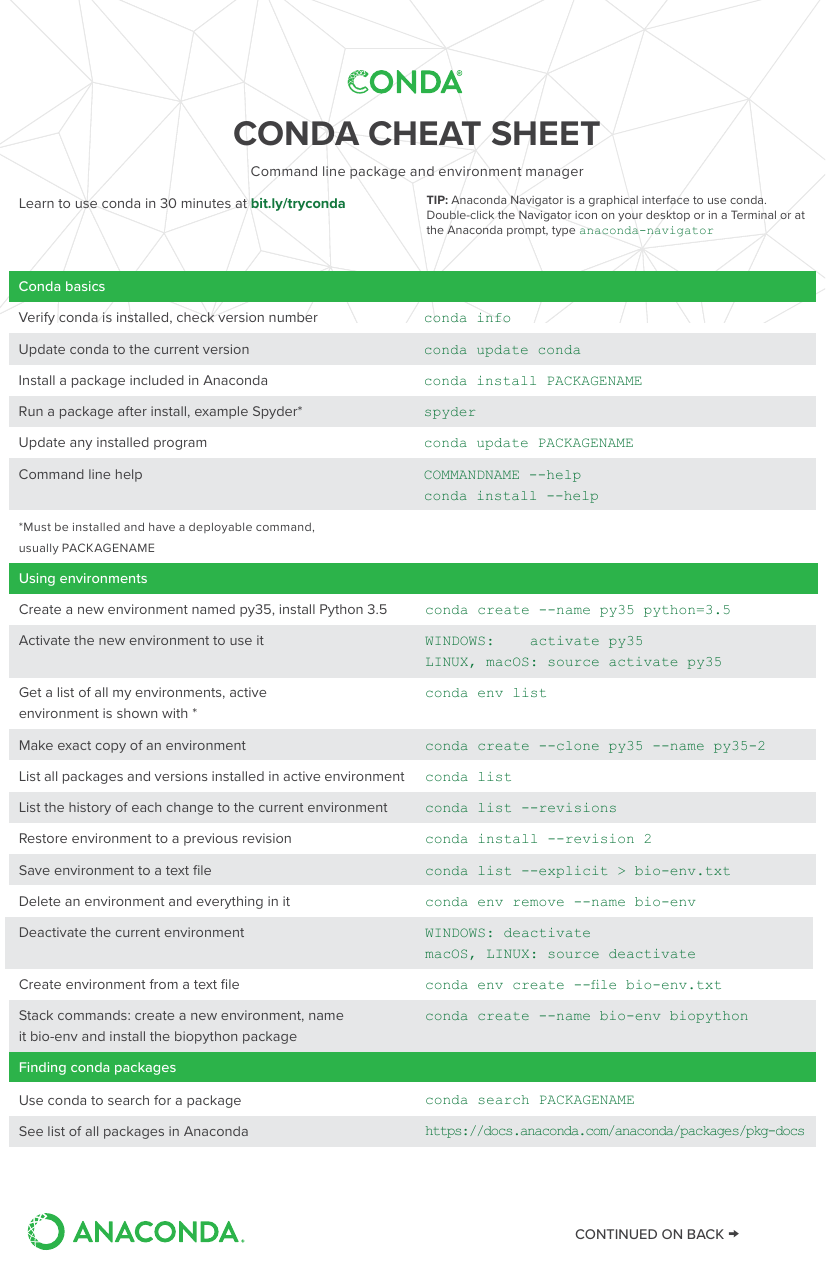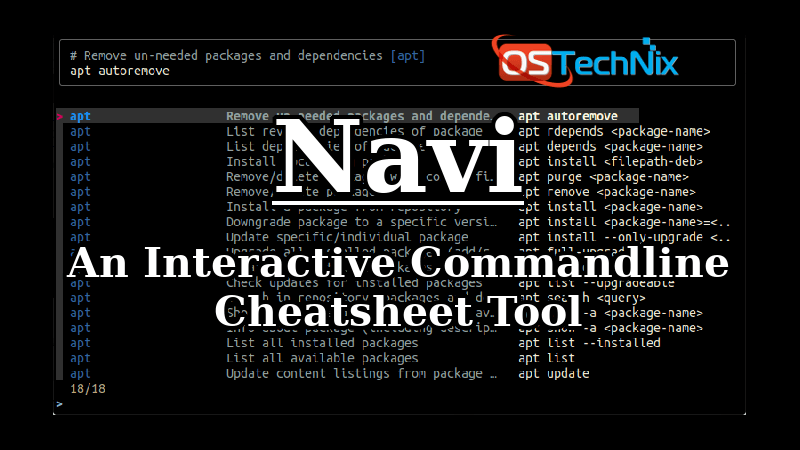some useful productivity tools¶¶
- code editor: sublime text: https://www.sublimetext.com/3
- nicer command line tool for Windows: http://cmder.net/
Conda commands¶¶
CONDA CHEAT SHEET Command line package and environment manager Learn to use conda in 30 minutes at bit.ly/tryconda TIP: Anaconda Navigator is a graphical interface to use conda. Conda commands¶ The conda command is the primary interface for managing installations of various packages. It can: Query and search the Anaconda package index and current Anaconda installation. Create new conda environments. Install and update packages into existing conda environments. Conda deactivate: deactivate conda environment: conda info -envs: list conda environments,. will be next to the environment you are currently in: conda list -n conda env name list software installed in this conda environment. Or simply, conda list. Conda info: information about your conda environment: conda env remove -name conda env name. Conda Enjoy this cheat sheet at its fullest within Dash, the macOS documentation browser. Managing Conda and Anaconda conda info. Verify conda is installed, check. A single command, pip install -r. Anaconda has also published a cheat sheet with a more extensive list of useful commands. Conda create -name ENVNAME python.
What is conda?

- Conda is a powerful environment and package manager.
- Create multiple environments with different versions of Python with different sets of libraries
- easily switch between environments
- http://anaconda.org/ provides free hosting for Python libraries
- conda helps to easily search for, install libraries and also to keep them up to date
Learn resources:
- getting started: http://conda.pydata.org/docs/test-drive.html#managing-environments
- reference doc: http://conda.pydata.org/docs/
List all environments¶¶

Run the above command in terminal
Create a new environment¶¶
Conda Commands Cheat Sheet Pdf
Check if new folder was created in C:anaconda3envs
Advanced steps¶¶
Clone an existing environment¶¶
For instance, to clone the root environment:
But you would most likely want to clone the ArcGIS Pro’s Python environment so you can experiment without messing up the default one

Starting Jupyter notebook in a different directory¶¶
For the most part you can cd to desired directory after activating your environment and start the notebook. But if you cannot do it:
Exporting an environment to a file¶¶
Conda Install Commands
It is useful to export your environment to a environment.yml file and include it in your repository. This allows replicating the project in a different computer by you or someone else.

This creates the .yml file with version number and source repo for all your packages. Thus, this file is specific for a particular OS and Python build version.
To create an agnostic file, use
This strips out the version numbers, enabling you to upgrade to newer versions of the packages.
Install from an environment file¶¶
To create a new environment from this file, run
